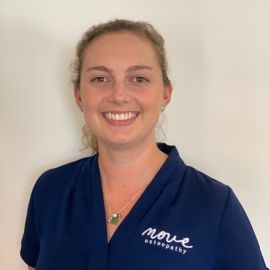Dry Needling and Osteopathy. What is Dry Needling?
Osteopath Dr Jess Watson explains
Dry needling is a treatment that uses fine, single-use needles, the same as those used in acupuncture. Dry needling and Osteopathy is becoming more common. Your osteopath may use dry needling in conjunction to other osteopathic techniques when they see fit. Dry needling is used to deactivate and help loosen tightened spots within the muscle. These tight spots are known as ‘trigger points’. It is also used to improve nerve conduction, blood supply, the strength of tendons and ligaments, and to stimulate reflex mechanisms within the area.
The overall goal of dry needling is to reduce muscle pain and spasm, increase range of motion of the surrounding joints, and provide an overall increase in function of the body.
When would dry needling be beneficial?
A number of conditions treated by Osteopaths can benefit from dry needling. Dry needling will normally make up only a small part of your osteopathic treatment. The following conditions can respond well to dry needling:
- Tennis/golfers elbow
- Back and neck pain
- Headaches
- RSI conditions
- Joint sprains
- Piriformis syndrome
- Rotator cuff injuries
- Acute sporting injuries
- Chronic pain conditions
together dry needling and osteopathy can be very helpful.
Is it painful?
As pain is a subjective experience, no patient’s experience with dry needling is the same. However, as the needle used is so fine most patients do not feel the needle pierce the skin.
Most commonly once the needle has entered the muscle, a small twitch or cramping sensation can be felt. There may be a small ache, slight numbness or heaviness. This feeling normally subsides and can be considered a good sign. The ache can indicate that the correct point has been found, and your muscle will soon relax.
Will I feel sore after?
Most patients respond very well to this form of treatment, however, similarly to all manual therapy techniques, some soreness may occur. Any sorenesss usually resolves 24-48 hours post treatment.
Is it the same as acupuncture?
No. Dry needling does use the same thin needles, but the objectives of the treatments are different. Dry needling is most commonly used to treat tight areas of muscles, known as ‘trigger points’. Acupuncture however focuses on inner body energy (Qi). Acupuncture needles are placed in very specific points to help facilitate and improve the Qi. Stimulating Acupuncture points can allow the body to properly heal.
Traditional Chinese Medicine and Acupuncture is a separate degree at university.
Dry needling is an adjunctive course for Osteopaths. Practitioners who have a degree such as an Osteopathy or Physiotherapy can do the training.
Osteopaths that utilise dry needling are, therefore, not acupuncturists unless they also hold a degree in Traditional Chinese Medicine, or a masters of Acupuncture.

This article was written by Osteopath – Jess Watson from our Alexandra Hills Clinic
